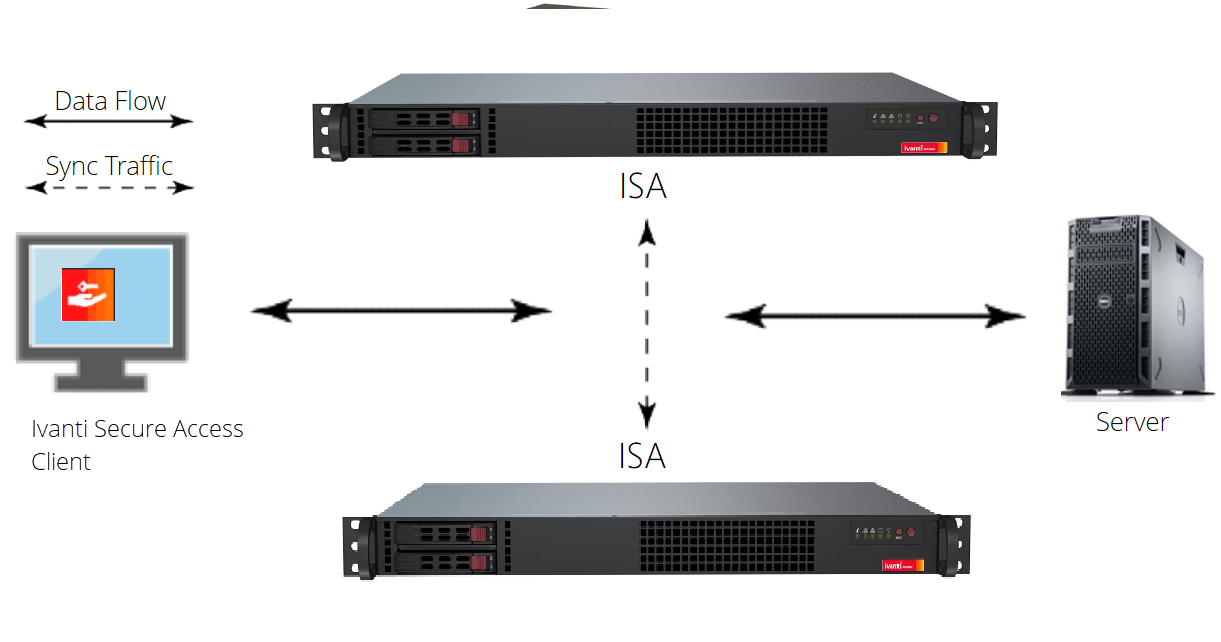Clustering
The following figure shows two ISA series devices deployed as a cluster pair.

Deployments
Ivanti access management framework supports two types of clusters:
•Load balancing clusters or active/active clusters
•Failover clusters or active/passive clusters
Load balancing clusters or active/active clusters - Load balancing clusters provide scalability and increase availability of Web-based services. The following figure shows an example of an active/active deployment.
Ivanti recommends using standalone nodes or clusters of a maximum of 2 nodes behind a load balancer.
Ivanti Security Appliance (ISA)/ISA-V does not support clusters containing more than two nodes for ICS.
Failover clusters or active/passive clusters - Failover clusters provide high availability (HA). The primary purpose of HA clusters is to provide uninterrupted access to data, even if a server loses network or storage connectivity, or fails completely, or if the application running on the server fails. The following figure shows an example of an active/passive deployment. The active/passive cluster supports only 2 node clusters in all types of platforms except VA.
- For further information on clustering and scalability, please contact Ivanti technical help.
- Ivanti access management framework also supports an IPv6 configuration for active/active and active/passive clusters.
Requirements and Limitations
You must follow these considerations when deploying a cluster:
•Cluster members must run the same software version.
•Cluster members must use the same hardware platform.
•State synchronization must occur only through the internal Network Interface Card (NIC).
•Ensure the cluster communication and resource access must take place over an internal network.
•You can deploy an active/passive clustering only within the same IP subnet.